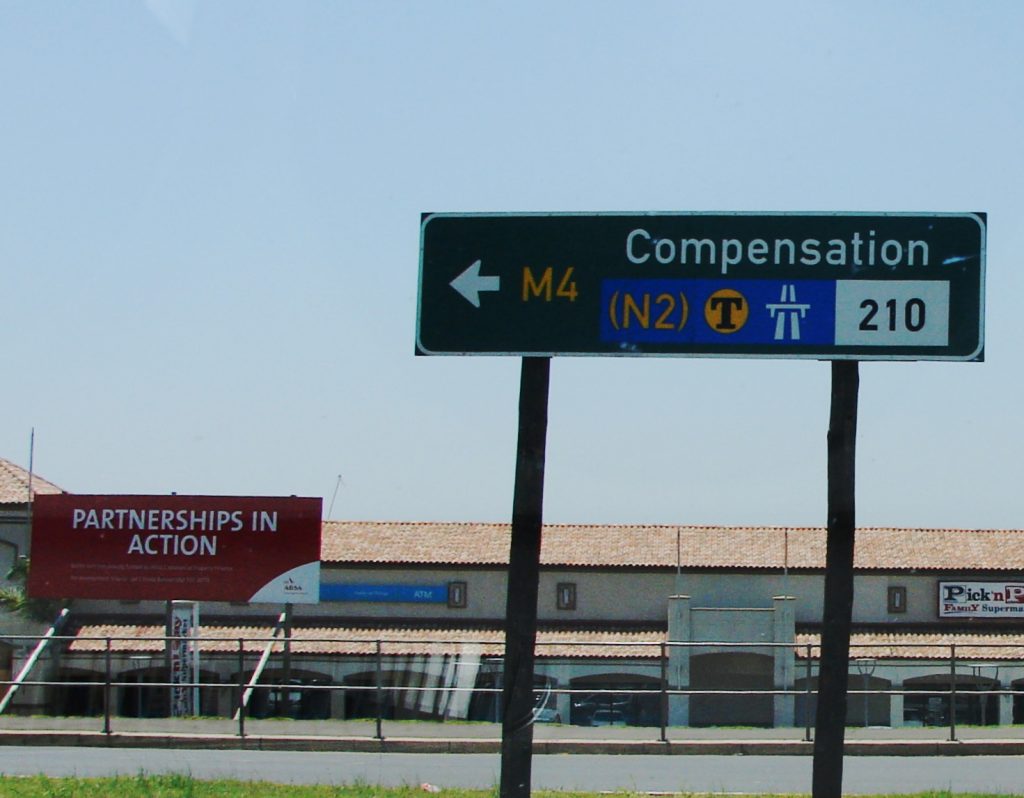 The goal of marriage is often “happily ever after.” Sometimes, it does not end up working out that way. What happens when a child born during a marriage is the result of an affair? What legal rights does the real father have towards establishing that the child is his? The following case out of Acadia Parish demonstrates Louisiana’s jurisprudentially-created doctrine of avowal.
The goal of marriage is often “happily ever after.” Sometimes, it does not end up working out that way. What happens when a child born during a marriage is the result of an affair? What legal rights does the real father have towards establishing that the child is his? The following case out of Acadia Parish demonstrates Louisiana’s jurisprudentially-created doctrine of avowal.
Michael Leger and Danielle Leger were married in 2007. In the Fall of 2011, Danielle had an affair with John Fontenot. Danielle became pregnant with Gracelynn Leger, who was born in August 2012. Fontenot had a DNA test done in October 2012, which indicated he was Gracelynn’s father.
On March 3, 2014, Fontenot served Michael with a petition for custody of Gracelynn, alleging that he was Gracelynn’s father. Michael was notified for the first time of the affair between Danielle and Fontenot and that he might not be Gracelynn’s father. In May 2014, Michael filed a petition for divorce against Danielle. Fontenot filed a Petition for Intervention, for Paternity and Custody, alleging that he was unable to file a timely avowal action because he feared for the safety of Danielle and Gracelynn. Michael filed a Peremptory Exception of Preemption, No Right of Action, and No Cause of Action.
 Louisiana Personal Injury Lawyer Blog
Louisiana Personal Injury Lawyer Blog


 Sometimes even the best-planned of deals amongst parties may fall through. Parties often turn to the courts to resolve contractual disputes. When a court is interpreting a contract between two parties, it is often as simple as applying the “four corners” rule. I.e. it will not look at anything outside the four corners of the contract. This particular method of interpretation is useful (and under Louisiana law mandatory) where a contract is written clearly and is not ambiguous. In a recent case, the Louisiana Fourth Circuit Court of Appeal upheld this method of interpretation when faced with a contract dispute out of Orleans Parish.
Sometimes even the best-planned of deals amongst parties may fall through. Parties often turn to the courts to resolve contractual disputes. When a court is interpreting a contract between two parties, it is often as simple as applying the “four corners” rule. I.e. it will not look at anything outside the four corners of the contract. This particular method of interpretation is useful (and under Louisiana law mandatory) where a contract is written clearly and is not ambiguous. In a recent case, the Louisiana Fourth Circuit Court of Appeal upheld this method of interpretation when faced with a contract dispute out of Orleans Parish. Accidents occur everywhere including the workplace. Are you entitled to any benefits if injured while on the job? One common benefit of employment is the availability of worker’s compensation when injured on the job. Worker’s compensation is a type of insurance that grants wage replacement and medical benefits to employees injured in the course of employment. This in exchange relinquishes the right to sue the employer for negligence. Does it matter if you have been recently promoted or demoted? Calculating wage replacement benefits can often not be as clear-cut as it may appear. The following case describes the standards in Louisiana for calculating a salaried employee’s average weekly wage (AWW) for workers’ compensation benefits.
Accidents occur everywhere including the workplace. Are you entitled to any benefits if injured while on the job? One common benefit of employment is the availability of worker’s compensation when injured on the job. Worker’s compensation is a type of insurance that grants wage replacement and medical benefits to employees injured in the course of employment. This in exchange relinquishes the right to sue the employer for negligence. Does it matter if you have been recently promoted or demoted? Calculating wage replacement benefits can often not be as clear-cut as it may appear. The following case describes the standards in Louisiana for calculating a salaried employee’s average weekly wage (AWW) for workers’ compensation benefits. Professionals in various fields whose work greatly impacts the lives of others may find themselves accused of malpractice. Especially in medicine where a seemingly simple mistake can end one’s life, the lawsuits that stem from malpractice can bring large awards to plaintiffs. This is where malpractice insurance comes in, to make sure these amounts are paid without completely destroying the livelihood of that professional. The Fifth Circuit Court of Appeal discussed malpractice insurance issues in a recent ruling.
Professionals in various fields whose work greatly impacts the lives of others may find themselves accused of malpractice. Especially in medicine where a seemingly simple mistake can end one’s life, the lawsuits that stem from malpractice can bring large awards to plaintiffs. This is where malpractice insurance comes in, to make sure these amounts are paid without completely destroying the livelihood of that professional. The Fifth Circuit Court of Appeal discussed malpractice insurance issues in a recent ruling. Ever wondered about the seemingly daunting world of contracts: the myriad of pages and often boring mechanical reading, not to mention those terms and conditions written in legalese? For most of us, not really. That’s for sure. But sometimes contractual disputes can be interesting. Ever hear the saying don’t mix business with pleasure? Well in a recent case, the Louisiana Court of Appeal was called upon to rule upon the terms of a settlement agreement that prohibited the parties from making disparaging or negative comments about each other.
Ever wondered about the seemingly daunting world of contracts: the myriad of pages and often boring mechanical reading, not to mention those terms and conditions written in legalese? For most of us, not really. That’s for sure. But sometimes contractual disputes can be interesting. Ever hear the saying don’t mix business with pleasure? Well in a recent case, the Louisiana Court of Appeal was called upon to rule upon the terms of a settlement agreement that prohibited the parties from making disparaging or negative comments about each other. As the adage goes, there are two sides to every story and when it comes to lawsuits, the details of those stories can make the difference between a courtroom success and a case never making it to trial. A case arising out of Mandeville, Louisiana is the perfect example of just how important the details of a story can be.
As the adage goes, there are two sides to every story and when it comes to lawsuits, the details of those stories can make the difference between a courtroom success and a case never making it to trial. A case arising out of Mandeville, Louisiana is the perfect example of just how important the details of a story can be.  It’s a common scenario: someone is injured or property is damaged because another party failed to use reasonable care. This situation is far from rare in the legal profession, and the responsible party is usually held accountable for their negligence with civil lawsuits. But what happens when the injured person attempts to hold the wrong party responsible? It seems unlikely, but as James Johnson discovered, it is possible and the consequences can alter the course of a lawsuit’s final outcome.
It’s a common scenario: someone is injured or property is damaged because another party failed to use reasonable care. This situation is far from rare in the legal profession, and the responsible party is usually held accountable for their negligence with civil lawsuits. But what happens when the injured person attempts to hold the wrong party responsible? It seems unlikely, but as James Johnson discovered, it is possible and the consequences can alter the course of a lawsuit’s final outcome. Accidents frequently occur in construction zones and they may be the fault of the injured party or someone else involved in the renovation site. Courts are often tasked with deciding whether the injured person is responsible for his or her own injury or if a different party is at fault. A recent case in Metairie highlights the complexities of identifying the responsible party.
Accidents frequently occur in construction zones and they may be the fault of the injured party or someone else involved in the renovation site. Courts are often tasked with deciding whether the injured person is responsible for his or her own injury or if a different party is at fault. A recent case in Metairie highlights the complexities of identifying the responsible party. The law often hinges on technicalities, which is why technical accuracy is critical in ensuring that all parties to a lawsuit have a fair and adequate understanding of the issue and that courts operate efficiently. Despite this importance, courts do not want justice to be skirted on the sole basis of a technical error. The Second Circuit Court of Louisiana emphasized this sentiment when it allowed a woman to recover damages for battery, despite the fact that she only alleged negligence in her pleadings. The court was able to do so under Louisiana’s fact-pleading system which allows recovery as long as the facts necessary to establish a claim are pled.
The law often hinges on technicalities, which is why technical accuracy is critical in ensuring that all parties to a lawsuit have a fair and adequate understanding of the issue and that courts operate efficiently. Despite this importance, courts do not want justice to be skirted on the sole basis of a technical error. The Second Circuit Court of Louisiana emphasized this sentiment when it allowed a woman to recover damages for battery, despite the fact that she only alleged negligence in her pleadings. The court was able to do so under Louisiana’s fact-pleading system which allows recovery as long as the facts necessary to establish a claim are pled.  Police officers are tasked with enforcing the law and upholding civic order, but what happens when a person feels that a police officer ignored his or her constitutional rights; will the officer be held accountable? A case arising out of Alexandria examines this question through the issue of excessive force and the qualified immunity defense involved in police officer shootings.
Police officers are tasked with enforcing the law and upholding civic order, but what happens when a person feels that a police officer ignored his or her constitutional rights; will the officer be held accountable? A case arising out of Alexandria examines this question through the issue of excessive force and the qualified immunity defense involved in police officer shootings.